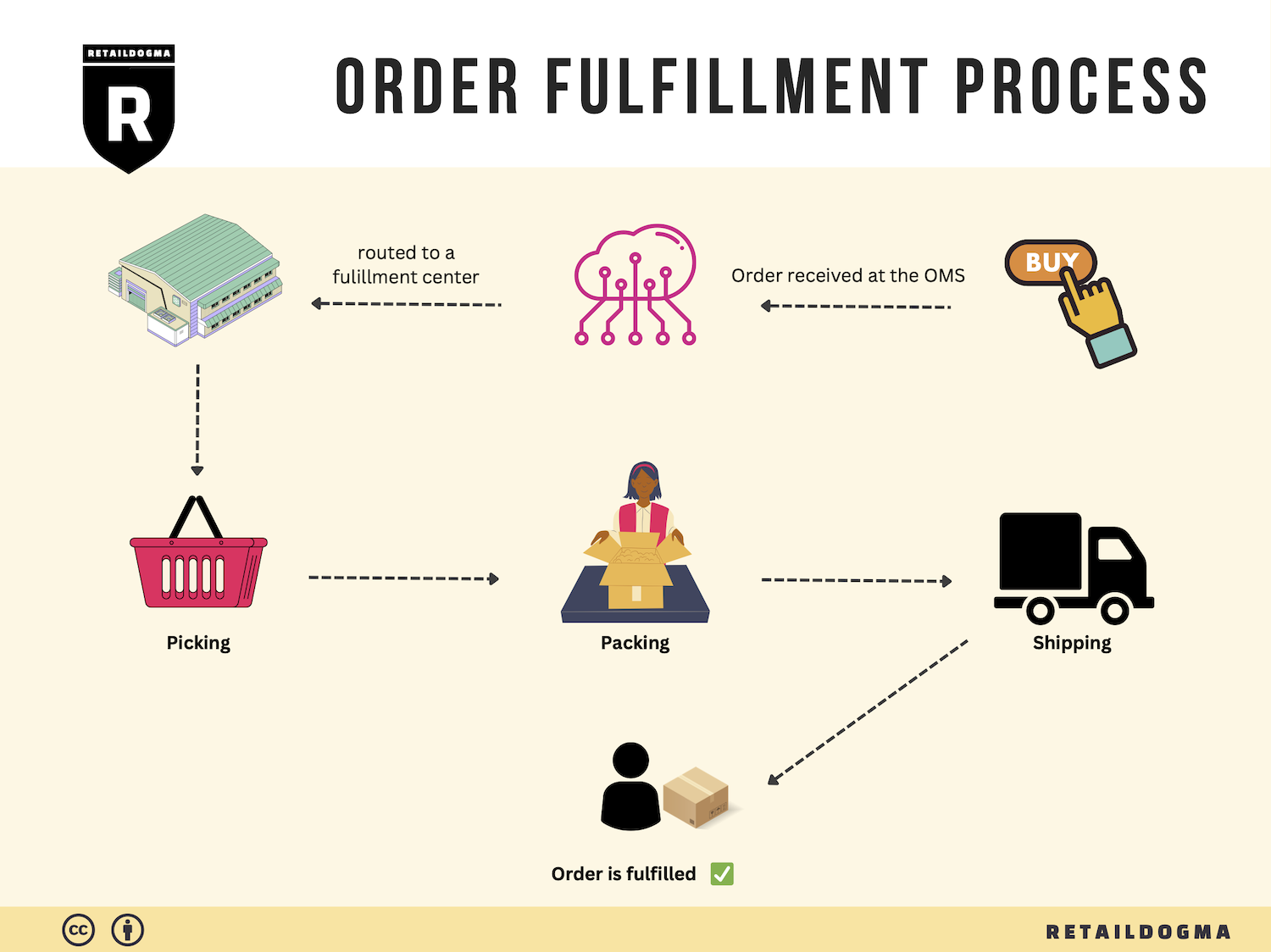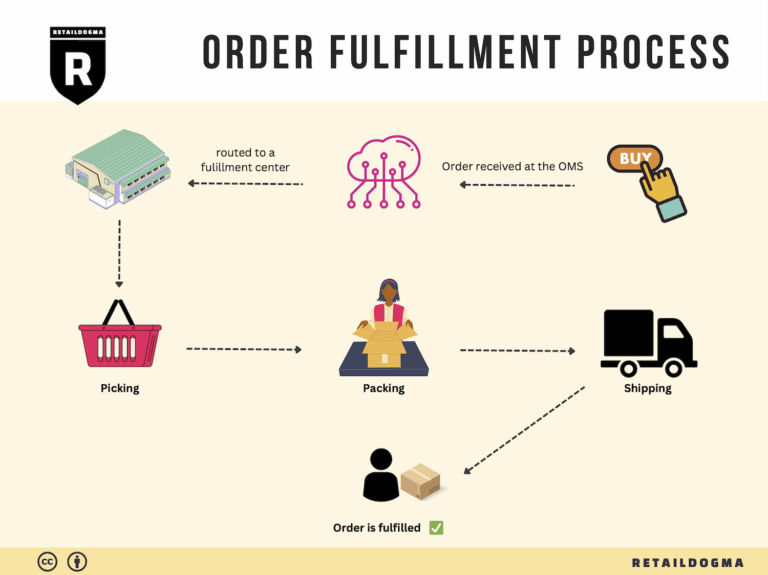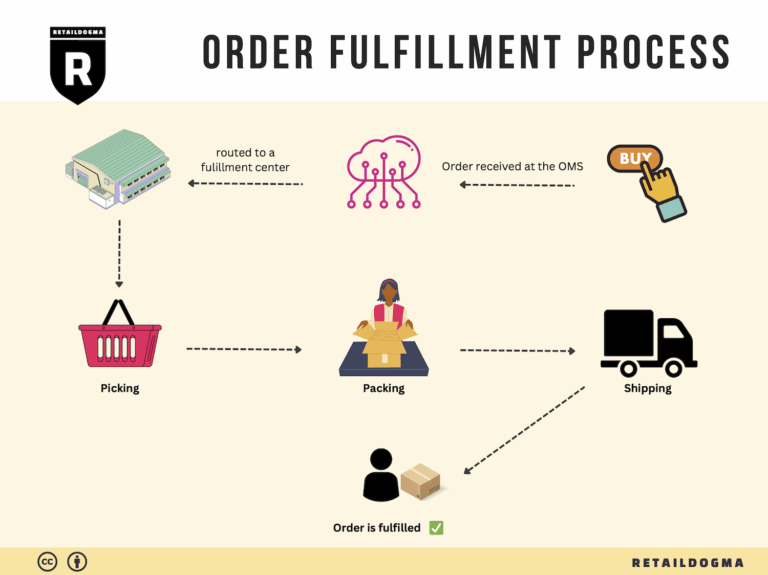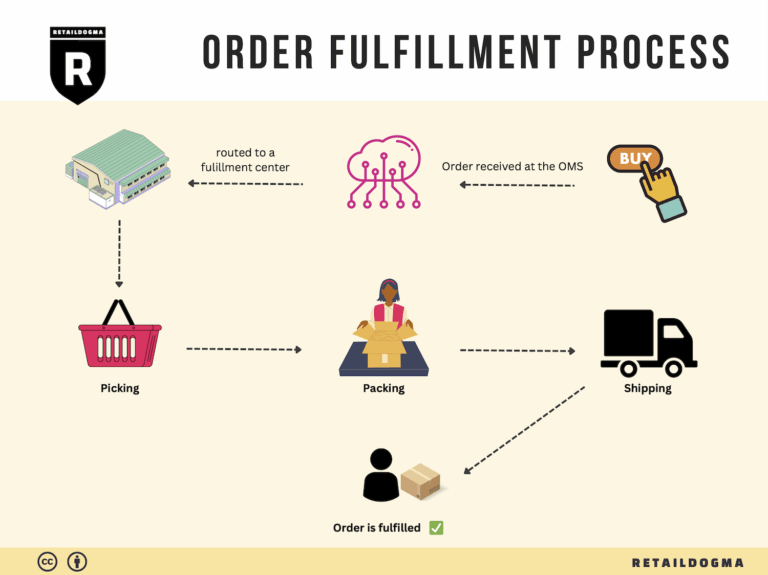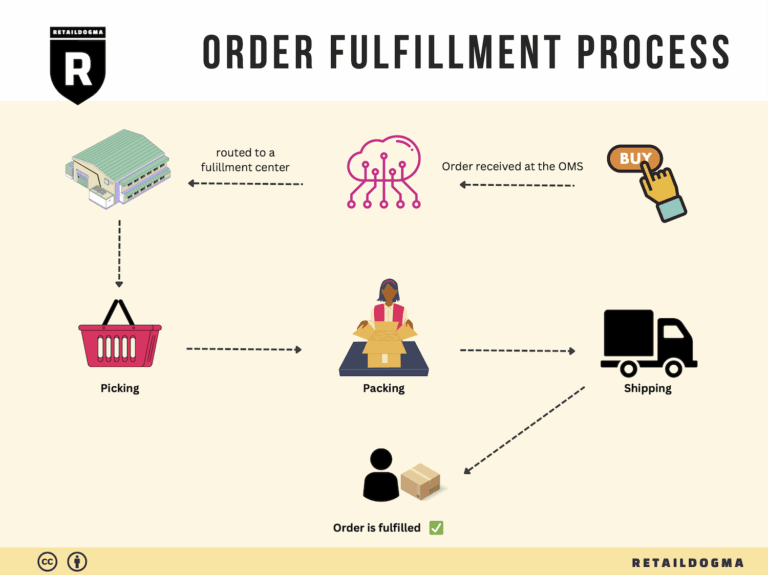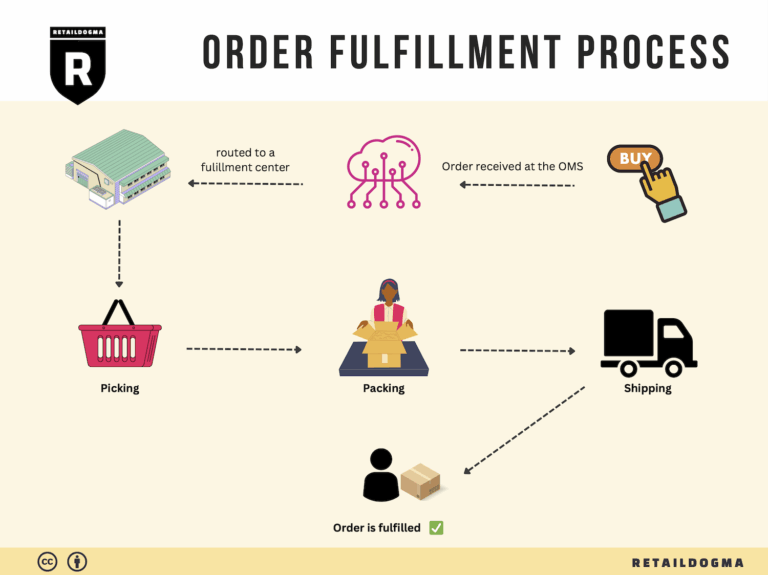What Is A Fulfillment Center? A Complete Guide (2025)
What is E-commerce Fulfillment? An Introduction for Growing Businesses
As your online business grows, you may find yourself grappling with an all-too-common challenge: the overwhelming burden of packing and shipping orders. The excitement of increased sales can quickly turn into stress as you juggle inventory management, order fulfillment, and customer expectations. This is where understanding e-commerce fulfillment becomes crucial.
E-commerce fulfillment is the comprehensive process that encompasses everything from receiving inventory and storing products to picking, packing, and shipping orders directly to customers. It’s about ensuring that your customers receive their purchases in a timely manner and in perfect condition. In an increasingly competitive online marketplace, a seamless fulfillment process can set your business apart and significantly enhance customer satisfaction.
In this guide, we will delve into various fulfillment models, including Third-Party Logistics (3PL) and Fulfillment by Amazon (FBA). Each model offers distinct advantages and challenges that can impact your operational efficiency and customer experience. We will explore the core services involved in fulfillment, such as inventory management, order processing, and returns handling, providing you with a clear understanding of what to expect from your fulfillment partner.
Choosing the right fulfillment partner is a critical decision that can influence your business’s scalability and profitability. This guide will outline key factors to consider when selecting a logistics partner, such as location, technology integration, service level agreements, and customer support. Additionally, we will discuss pricing structures in fulfillment services, helping you identify what to budget for and how to assess the value offered by potential partners.
Ultimately, this guide aims to empower you with the knowledge needed to make informed decisions about your logistics strategy. By understanding the intricacies of e-commerce fulfillment, you can streamline operations, enhance customer satisfaction, and position your business for sustainable growth. Whether you are just starting out or looking to scale, mastering fulfillment is essential for your success in the e-commerce landscape.
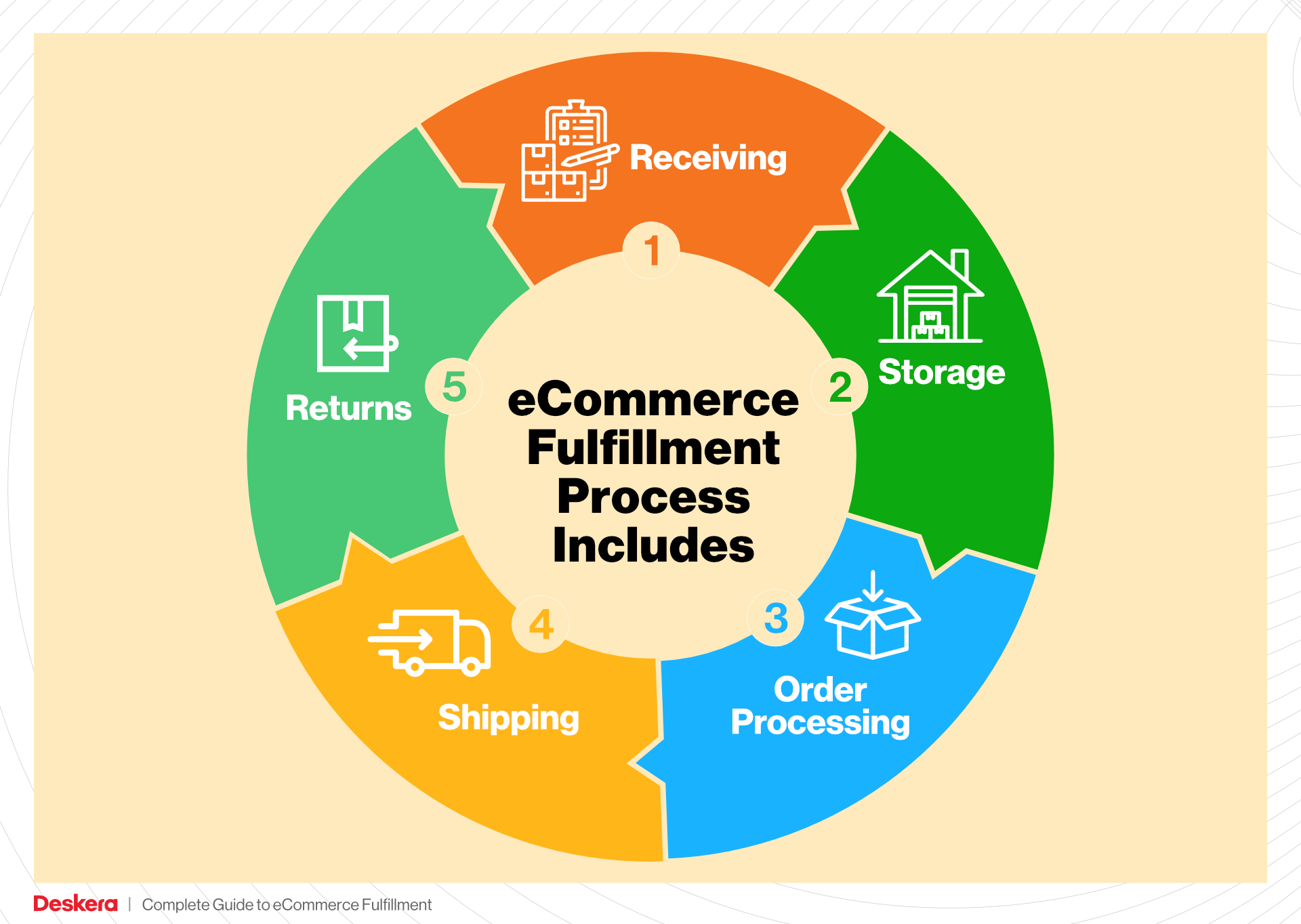
What You’ll Learn In This Guide
- What is E-commerce Fulfillment? An Introduction for Growing Businesses
- The Order Fulfillment Process: From ‘Buy’ Button to Customer’s Door
- Comparing Fulfillment Models: In-House vs. 3PL vs. Dropshipping
- A Deep Dive into Amazon FBA: Pros, Cons, and Who It’s For
- Core Services Offered by Fulfillment Centers
- How to Choose a Fulfillment Partner: A 6-Point Checklist
- Understanding Fulfillment Pricing: A Breakdown of Common Fees
- Frequently Asked Questions (FAQs) about Fulfillment
- Conclusion: Is Outsourcing Fulfillment the Right Move for Your Business?
- Important Disclaimer
The Order Fulfillment Process: From ‘Buy’ Button to Customer’s Door
1. Receiving Inventory
The order fulfillment process begins with receiving inventory at the fulfillment center. This step is crucial as it lays the groundwork for all subsequent operations. When products arrive, they are checked against purchase orders to ensure accuracy. This involves verifying quantities, inspecting for damage, and confirming that the right items were delivered.
A key term associated with this stage is SKU (Stock Keeping Unit), which is a unique identifier for each product. Properly managing SKUs allows for efficient tracking and retrieval of items in the warehouse. Accurate receiving minimizes discrepancies in inventory counts and prevents future fulfillment errors. For businesses, establishing efficient receiving protocols can significantly enhance the overall supply chain performance, reducing delays in getting products to customers.
2. Warehouse Storage
Once the inventory is received and verified, it is stored in the warehouse. This step is vital for maintaining an organized and accessible inventory system. Products are stored in designated locations, often based on their size, type, and demand frequency. Efficient storage solutions not only maximize space utilization but also facilitate quicker retrieval during order picking.
A common term in this stage is bin locations, which refer to specific spots within the warehouse where items are stored. By implementing a systematic approach to warehouse storage, such as utilizing a warehouse management system (WMS), businesses can streamline inventory tracking and improve order fulfillment speeds. Efficient storage practices lead to reduced operational costs and enhanced customer satisfaction through timely deliveries.
3. Order Picking
The next step is order picking, where items are selected from the warehouse to fulfill customer orders. This process is critical as it directly impacts the accuracy and speed of order fulfillment. Orders are typically compiled into pick lists, which guide warehouse staff in retrieving the correct items efficiently.
There are various picking methods, including single order picking, batch picking, and zone picking, each suited to different business needs. The choice of method can significantly affect productivity. For instance, batch picking allows workers to gather multiple orders at once, improving efficiency, especially during peak times. An effective picking strategy can reduce errors and enhance the overall customer experience by ensuring that the right products are delivered.
4. Order Packing
After items are picked, they move to the packing stage. This step involves carefully packing the products to prevent damage during transit and ensuring that the order is complete. Packing is not just about placing items in a box; it includes selecting the appropriate packaging materials, labeling packages correctly, and including necessary documentation like invoices or return slips.
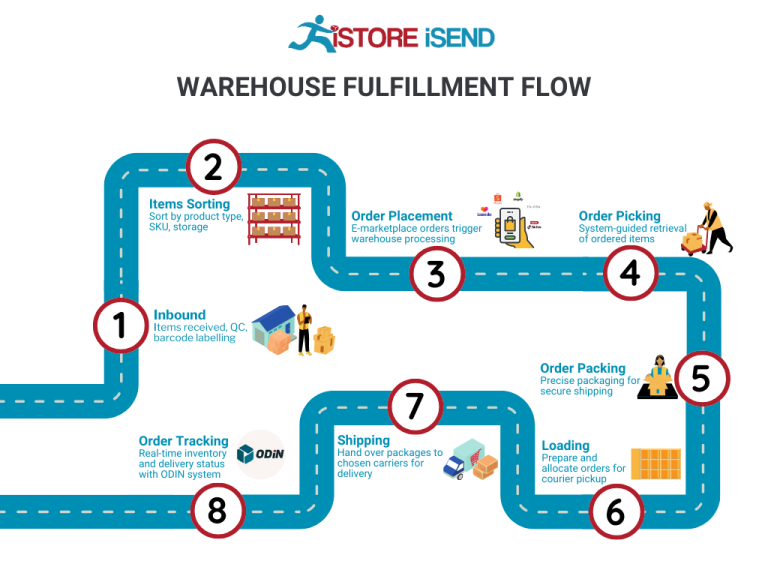
A crucial term here is packing slips, which detail the contents of the package and confirm that the order has been fulfilled accurately. Efficient packing processes help minimize returns due to damaged goods and incorrect orders, which can be costly for businesses. Implementing best practices in packing can lead to reduced shipping costs and improved customer satisfaction, as well-packed items are more likely to arrive in perfect condition.
5. Shipping & Delivery
The final step in the order fulfillment process is shipping and delivery. Once packages are packed, they are handed over to shipping carriers for delivery to customers. This stage is vital as it directly influences the customer’s perception of the business. Timely and reliable shipping can significantly enhance customer loyalty.
Key terms associated with this stage include shipping methods (e.g., standard, expedited, international) and tracking numbers, which allow customers to monitor the status of their orders. Businesses must choose appropriate shipping strategies that balance cost and speed, as well as establish relationships with reliable carriers. Efficient shipping practices contribute to a smooth final step in the fulfillment process, ensuring that customers receive their orders promptly and as expected.
Conclusion
In summary, the order fulfillment process is a multi-step operation that requires careful coordination and management. By focusing on each phase—from receiving inventory to shipping and delivery—businesses can optimize their operations, reduce costs, and ultimately enhance customer satisfaction. Understanding and implementing best practices at each step is essential for scaling e-commerce operations effectively.
Comparing Fulfillment Models: In-House vs. 3PL vs. Dropshipping
Fulfillment Model Comparison Table
| Model | Who Handles Inventory | Best For (Business Stage) | Key Advantage | Key Disadvantage |
|---|---|---|---|---|
| In-House Fulfillment | The business itself | Established businesses | Full control over inventory and processes | High overhead costs and resource requirements |
| Third-Party Logistics (3PL) | A third-party logistics provider | Growing businesses | Scalable solutions and specialized expertise | Less control over inventory and fulfillment |
| Dropshipping | Supplier or manufacturer | Startups and small businesses | Low initial investment and minimal risk | Lower profit margins and potential supplier issues |
In-House Fulfillment
In-house fulfillment involves managing the entire logistics process within the company. This model typically suits established businesses with sufficient resources and a steady order volume. With in-house fulfillment, a business retains complete control over its inventory, warehousing, and distribution processes. This control can lead to enhanced customer service, as companies can tailor their fulfillment strategies to meet specific customer needs. Additionally, having direct oversight can lead to improved quality control and faster response times to inventory fluctuations.
However, this model has its drawbacks. Operating a fulfillment center in-house requires significant investment in warehousing space, staff, and technology. Businesses must also manage the complexities of logistics, including shipping, returns, and inventory management. As a result, overhead costs can be high, and a business may find it challenging to scale operations quickly in response to demand spikes. In-house fulfillment is best for those who can balance the costs and complexities with the benefits of control and customization.
Third-Party Logistics (3PL)
Third-party logistics (3PL) providers offer outsourced logistics services that include transportation, warehousing, and fulfillment. This model is ideal for growing businesses that want to scale without the burden of managing logistics themselves. By partnering with a 3PL, businesses can leverage the provider’s expertise, technology, and existing infrastructure, allowing them to focus on core business activities like marketing and product development.
One of the key advantages of using a 3PL is scalability. As order volumes increase, 3PLs can adjust their services accordingly, providing businesses with the flexibility to expand into new markets or product lines without significant upfront investments. Additionally, 3PLs often have established relationships with carriers, which can lead to reduced shipping costs and improved delivery times.
On the downside, working with a 3PL means relinquishing some control over the fulfillment process. Businesses may experience challenges in communication and coordination, which can impact customer service and satisfaction. Furthermore, there may be hidden fees or contractual obligations that can complicate the partnership. Businesses must carefully evaluate 3PL providers to ensure alignment with their operational goals and customer expectations.
Dropshipping
Dropshipping is a fulfillment model where the retailer does not hold inventory but instead transfers customer orders to a supplier or manufacturer, who then ships the products directly to the customer. This model is particularly attractive for startups and small businesses with limited capital and resources, as it eliminates the need for upfront inventory investments and reduces operational complexities.
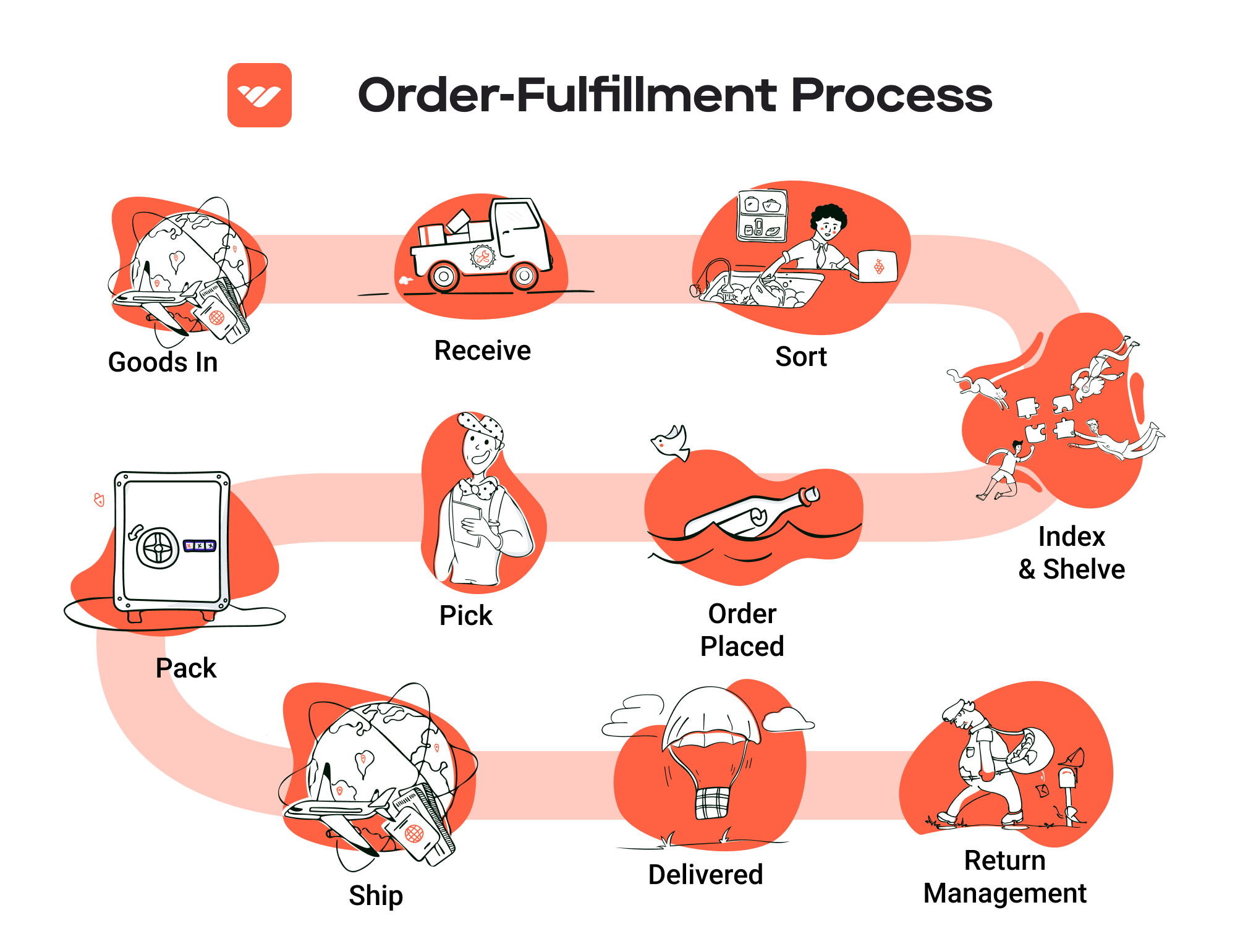
The primary advantage of dropshipping is its low barrier to entry. Entrepreneurs can start an e-commerce business without the risks associated with inventory management and warehousing. Additionally, dropshipping allows for a wide product range without the financial burden of stocking items, making it easier to test new products and pivot business strategies.
However, dropshipping comes with its own set of challenges. Profit margins are typically lower compared to other fulfillment models, as retailers pay the supplier’s wholesale prices without the ability to negotiate bulk discounts. Moreover, businesses have less control over inventory levels, shipping times, and product quality, which can lead to customer dissatisfaction if suppliers do not meet expectations. Managing supplier relationships and ensuring consistent service quality are critical for success in this model.
Conclusion
Choosing the right fulfillment model is crucial for e-commerce success. In-house fulfillment offers control but at a higher cost and complexity, making it suitable for established businesses. Third-party logistics provide a scalable solution for growing companies, while dropshipping serves as an accessible entry point for startups. Each model has its strengths and weaknesses, and the best choice will depend on the business’s stage, resources, and strategic goals. As businesses scale, they may also find opportunities to hybridize these models, leveraging the strengths of each to optimize their fulfillment strategy.
A Deep Dive into Amazon FBA: Pros, Cons, and Who It’s For
Understanding Fulfillment by Amazon (FBA)
Fulfillment by Amazon (FBA) is a service provided by Amazon that allows e-commerce sellers to store their products in Amazon’s fulfillment centers. In this model, Amazon takes care of storage, packaging, and shipping directly to customers, as well as handling customer service and returns. This service enables sellers to leverage Amazon’s extensive logistics network, enhancing their ability to scale operations efficiently.
How FBA Works
-
Product Listing: Sellers begin by listing their products on Amazon. They can choose to enroll in FBA for individual products or their entire catalog.
-
Inventory Shipment: Once products are listed, sellers send their inventory to Amazon’s fulfillment centers. Amazon provides guidance on which fulfillment centers to send inventory based on geographic demand and logistical efficiency.
-
Storage: Products are stored in Amazon’s warehouses until they are sold. Amazon manages this inventory, ensuring that it is organized and readily accessible.
-
Order Fulfillment: When a customer places an order, Amazon picks, packs, and ships the product on behalf of the seller. This process typically includes shipping via Amazon’s Prime service, which offers expedited delivery options.
-
Customer Service and Returns: Amazon also handles all customer service inquiries related to FBA orders, as well as returns, making the process seamless for both sellers and customers.
Pros of Using FBA
-
Prime Eligibility: Products fulfilled by Amazon are automatically eligible for Amazon Prime, which can significantly increase sales. Prime members often prefer products that can be delivered quickly and at no additional shipping cost.
-
Customer Trust: Amazon’s brand reputation fosters trust among customers. When they see “Fulfilled by Amazon,” they are more likely to feel secure in their purchase, knowing that Amazon will handle any issues that arise post-purchase.
-
Multi-Channel Fulfillment: FBA allows sellers to fulfill orders from multiple sales channels, not just Amazon. This means sellers can use FBA to handle orders from their own websites or other e-commerce platforms, simplifying logistics.
-
Scalability: FBA makes it easier for sellers to scale their business. As demand increases, sellers can send more inventory to Amazon without needing to invest in their own warehouse space or shipping infrastructure.
-
Advanced Logistics: Amazon’s extensive logistics network enables faster shipping times and greater operational efficiency. Sellers can benefit from Amazon’s expertise in inventory management and order fulfillment.
Cons of Using FBA
-
High Fees: While FBA provides many conveniences, it comes at a cost. Sellers must pay storage fees, fulfillment fees, and additional charges for long-term storage, which can eat into profit margins.
-
Strict Inventory Rules: Amazon has stringent requirements regarding inventory management, including labeling, packaging, and shipping standards. Failure to comply can result in additional fees or penalties.
-
Commingling Risks: FBA uses a commingling system, where products from different sellers may be stored together. This poses risks of counterfeit products or issues with returns, as sellers may receive their own products back mixed with others.
-
Loss of Control: When using FBA, sellers relinquish a degree of control over their inventory and customer interactions. Amazon’s policies dictate many aspects of the fulfillment process, which may not align with a seller’s branding or service philosophy.
-
Seasonal Challenges: During peak seasons, such as holidays, storage costs may increase, and there could be delays in processing times due to higher volumes of orders. Sellers must plan ahead to mitigate these challenges.
Who is FBA Best For?
Fulfillment by Amazon is particularly beneficial for:
-
Small to Medium-Sized Businesses: FBA provides small and medium-sized sellers access to Amazon’s extensive logistics without the need for significant upfront investment in infrastructure.
-
Businesses with High Sales Volumes: Sellers who anticipate high sales volumes can benefit from the efficiencies of Amazon’s fulfillment network, allowing them to focus on scaling their business rather than logistics.
-
Sellers with Limited Resources: E-commerce entrepreneurs who lack the resources or expertise to manage their own warehousing and fulfillment operations can leverage FBA to streamline their processes.
-
Brands Seeking Exposure: For brands looking to increase visibility and sales on Amazon, FBA can enhance product discoverability through Prime eligibility and customer trust.
-
Multi-Channel Sellers: Businesses that sell across various platforms can benefit from FBA’s multi-channel fulfillment capabilities, allowing them to centralize their logistics.
In conclusion, while FBA offers numerous advantages that can significantly enhance an e-commerce business’s operational efficiency and reach, it is essential to weigh these benefits against the potential drawbacks, particularly the associated costs and loss of control. By understanding the intricacies of FBA, sellers can make informed decisions that align with their business goals and strategies.
Core Services Offered by Fulfillment Centers
Inventory Management & Warehousing
Inventory management and warehousing are foundational services provided by fulfillment centers that enable e-commerce businesses to maintain optimal stock levels and streamline operations. Fulfillment centers offer sophisticated inventory management systems that track product quantities, locations, and movements in real time. This technology ensures that businesses can monitor stock levels accurately, preventing stockouts or overstock situations.
The benefits of effective inventory management include enhanced visibility of stock, which helps in making informed purchasing decisions and improving cash flow. By utilizing the warehousing capabilities of fulfillment centers, businesses can store products closer to their customer base, reducing shipping times and costs. This localized approach not only improves customer satisfaction through faster delivery but also allows businesses to respond swiftly to market demands and seasonal fluctuations.
Pick and Pack Services
Pick and pack services are critical components of the order fulfillment process. This service involves selecting products from the warehouse (picking) and packaging them for shipment (packing). Fulfillment centers employ trained staff and advanced technology, such as automated picking systems and barcode scanning, to ensure accuracy and efficiency in this process.
The benefits of utilizing pick and pack services include increased order accuracy, which minimizes returns and enhances customer satisfaction. Moreover, outsourcing this task allows e-commerce businesses to focus on core activities like marketing and product development, rather than getting bogged down in logistics. Efficient pick and pack operations also lead to faster order processing times, enabling businesses to meet customer expectations for rapid delivery.
Kitting and Assembly
Kitting and assembly services involve combining multiple individual products into a single package or kit, which can be particularly advantageous for promotional offers, bundling products, or creating complex items that require assembly before shipping. Fulfillment centers provide the necessary labor and resources to efficiently manage this process, ensuring that products are assembled correctly and packaged professionally.
The primary benefit of kitting and assembly services lies in their ability to enhance product offerings and increase average order values. By offering bundled products or kits, businesses can attract customers looking for convenience and value. Additionally, these services can reduce handling times and costs associated with managing multiple individual SKUs, streamlining the overall fulfillment process and improving operational efficiency.
Returns Management (Reverse Logistics)
Returns management, or reverse logistics, is an essential service offered by fulfillment centers that focuses on handling product returns efficiently. This process involves receiving returned items, inspecting their condition, restocking them, or processing them for refurbishment or disposal. Fulfillment centers often have established systems for managing returns, making this typically cumbersome process more straightforward for e-commerce businesses.
The benefits of effective returns management are significant. A well-organized returns process can enhance customer satisfaction by providing a hassle-free experience for returns and exchanges. Additionally, it allows businesses to recover value from returned products, whether through resale, refurbishment, or recycling. Efficient returns management can also provide valuable insights into customer preferences and product quality, enabling businesses to make informed decisions about inventory and product offerings.
Conclusion
In summary, the core services offered by fulfillment centers—inventory management and warehousing, pick and pack services, kitting and assembly, and returns management—are vital for e-commerce businesses looking to scale operations effectively. By leveraging these services, businesses can enhance operational efficiency, improve customer satisfaction, and ultimately drive growth. As e-commerce continues to evolve, partnering with a capable fulfillment center becomes increasingly essential for maintaining a competitive edge in the marketplace.
How to Choose a Fulfillment Partner: A 6-Point Checklist
Location & Warehouse Network
Importance:
The geographical location of your fulfillment partner’s warehouses can significantly impact shipping times, costs, and overall customer satisfaction. A partner with a well-distributed network can help you reach your customers more quickly and cost-effectively, which is especially crucial for e-commerce businesses aiming to compete on speed and reliability.
Questions to Ask:
1. Where are your warehouses located?
Understanding the proximity of their warehouses to your customer base can help you estimate shipping costs and delivery times.
-
Do you have a network of fulfillment centers?
A partner with multiple locations can offer better shipping rates and faster delivery options. -
How do you handle inventory distribution across warehouses?
Inquire about their strategy for managing stock levels and ensuring availability in the right locations.
Technology & Integrations
Importance:
In today’s digital landscape, the ability to seamlessly integrate technology is essential for efficient operations. Your fulfillment partner should have robust technology that allows for real-time inventory tracking, order management, and easy integration with your e-commerce platform.
Questions to Ask:
1. What technology do you use for order processing and inventory management?
Look for platforms that offer real-time updates and visibility into your inventory levels.
-
Can your system integrate with our e-commerce platform?
Ensure compatibility with your existing systems (like Shopify, WooCommerce, or Amazon) to streamline operations. -
Do you offer API access?
This can be crucial for businesses that want to customize their fulfillment processes or need advanced reporting capabilities.
Specializations (e.g., cold storage, oversized items)
Importance:
Different businesses have different needs. If you sell products that require special handling—like perishables needing cold storage or oversized items—your fulfillment partner must have the appropriate facilities and expertise.
Questions to Ask:
1. What specializations do you offer?
Identify if they have the capacity to handle your specific product types, such as hazardous materials or temperature-sensitive goods.
-
How do you ensure compliance with regulations for specialized goods?
Compliance is vital for sectors like food or pharmaceuticals; understanding their processes can mitigate risks. -
What is your experience with handling products like mine?
Ask for case studies or examples of similar clients they have successfully serviced.
Scalability & Capacity
Importance:
As your business grows, your fulfillment needs will change. A good partner should be able to scale operations up or down as necessary, without compromising on service quality.
Questions to Ask:
1. What is your capacity for handling increased order volumes?
Discuss their ability to manage spikes in demand, especially during peak seasons or promotions.
-
How do you handle capacity planning?
Understand their processes for anticipating demand and managing inventory accordingly. -
Can you accommodate seasonal fluctuations in our business?
This is particularly important for businesses that experience significant seasonal sales.
Pricing and Contracts
Importance:
Understanding the pricing structure and contract terms is essential to avoid unexpected costs that could erode your profit margins. Transparency in pricing can help you make informed decisions.
Questions to Ask:
1. What is your pricing model?
Determine if they charge per order, per item, or have flat-rate pricing.
-
Are there any hidden fees?
Inquire about costs related to storage, packaging, or returns that may not be immediately apparent. -
What are the contract terms?
Understand the length of the contract, termination clauses, and any penalties for early termination.
Customer Support & Reviews
Importance:
Reliable customer support is critical in logistics. You need a partner who can quickly address issues that may arise, ensuring your operations run smoothly.
Questions to Ask:
1. What kind of customer support do you offer?
Look for partners who provide dedicated account managers, 24/7 support, or multi-channel support options.
-
Can you provide references or case studies from current clients?
Hearing from others about their experiences can provide insights into the partner’s reliability and responsiveness. -
How do you handle disputes or issues that arise?
Understanding their processes for conflict resolution can give you confidence in their ability to support your business.
Choosing the right fulfillment partner is a critical decision that can greatly influence your e-commerce business’s success. By carefully evaluating potential partners using this checklist, you can ensure that you select a partner who aligns with your operational needs and growth ambitions.
Understanding Fulfillment Pricing: A Breakdown of Common Fees
Initial Setup Fees
Initial setup fees are often the first cost e-commerce businesses encounter when partnering with a fulfillment center. These fees cover the administrative and logistical processes required to establish your account and prepare your products for storage and shipment. The amount can vary significantly between providers but typically includes costs for onboarding, account setup, and sometimes the integration of software systems for inventory management.
Calculation: Setup fees can be a flat rate or based on the complexity of your product line. For instance, if your business requires custom software integration or specialized handling instructions, the fees may increase. Always clarify what is included in these fees to avoid unexpected charges.
Receiving Fees
Once your products arrive at the fulfillment center, receiving fees come into play. These fees are charged for the handling of incoming inventory, including unloading, inspecting, and storing products. It’s essential for fulfillment centers to ensure that the received goods match the accompanying documentation in terms of quantity and quality.
Calculation: Receiving fees are generally calculated per unit or per pallet. For example, if a fulfillment center charges $0.50 per unit and you send 1,000 units, your total receiving fee would be $500. Some centers may also have a minimum charge for smaller shipments, so it’s vital to factor this into your logistics planning.
Storage Fees (per pallet/bin)
Storage fees are incurred for the space your inventory occupies within the fulfillment center. This fee is crucial for understanding your ongoing costs, especially as your product line grows. Storage fees can vary based on the size of the inventory and the duration it stays in the warehouse.
Calculation: These fees are typically charged on a monthly basis and can be calculated per pallet or per bin. For instance, if a fulfillment center charges $10 per pallet per month and you store 10 pallets, your monthly storage fee would be $100. Additionally, some centers may implement long-term storage fees for items stored beyond a specific period, which could impact your inventory management strategy.
Pick & Pack Fees (per item/order)
Pick and pack fees are charged for the labor involved in retrieving your products from storage and preparing them for shipment. This process includes picking the items, packing them into boxes, and labeling for delivery. Understanding this fee structure is vital for budgeting and pricing your products accurately.
Calculation: Pick and pack fees can be charged per item or per order. For example, if a fulfillment center charges $1.00 per item and you have an order of 50 items, your total fee would be $50. Some fulfillment centers may also have tiered pricing based on order volume or offer discounts for larger orders, which can be beneficial as your sales scale.
Shipping Fees
Shipping fees cover the cost of transporting your orders to customers. This fee can vary significantly based on the shipping method chosen (standard, expedited, etc.), the weight and dimensions of the package, and the destination.
Calculation: Shipping fees are generally based on the carrier’s rates, which can be influenced by factors such as package weight, dimensions, and distance. For instance, if a shipment costs $10 to send via standard shipping and you ship 100 orders, your total shipping cost would be $1,000. It’s advisable to negotiate shipping rates with fulfillment centers or explore partnerships with shipping carriers to secure better rates.
Tips for Getting an Accurate Quote
-
Provide Detailed Information: When requesting quotes, give clear and comprehensive details about your product types, expected order volumes, and any special handling requirements.
-
Ask About Hidden Fees: Inquire about any additional charges that may not be included in the initial quote, such as long-term storage fees or charges for returns.
-
Consider Volume Discounts: Ask if the fulfillment center offers discounts for higher volumes of orders or storage, which can significantly reduce your overall costs.
-
Review Service Level Agreements (SLAs): Ensure you understand the service levels promised by the fulfillment center, including order processing times and inventory accuracy.
-
Compare Multiple Providers: Don’t settle for the first quote. Compare multiple fulfillment centers to find the best pricing and services that align with your business needs.
By understanding these common fulfillment pricing models and preparing adequately, you can effectively manage your e-commerce logistics, ultimately leading to a more profitable business operation.
Frequently Asked Questions (FAQs) about Fulfillment
1. What is the Amazon Fulfillment Center GEU5?
The Amazon Fulfillment Center GEU5 is a specific location within Amazon’s extensive network of fulfillment centers. It is designed to store, pick, pack, and ship products on behalf of sellers using Amazon’s Fulfillment by Amazon (FBA) service. This center plays a crucial role in facilitating quick delivery and efficient inventory management.
2. How does the Fulfillment by Amazon (FBA) process work?
The FBA process involves several key steps:
1. Inventory Preparation: Sellers send their products to Amazon’s fulfillment centers, including GEU5.
2. Storage: Amazon stores the products until an order is placed.
3. Order Processing: When a customer places an order, Amazon picks the item from the inventory.
4. Packing: The item is packed securely for shipping.
5. Shipping: Amazon ships the package directly to the customer, handling all logistics and tracking.
3. What is the difference between a warehouse and a fulfillment center?
A warehouse primarily focuses on storing goods, while a fulfillment center is designed for order processing and shipping. Fulfillment centers like GEU5 integrate technology and logistics to ensure quick order fulfillment, which is essential for e-commerce businesses aiming for fast delivery times.
4. What are the benefits of using Amazon’s fulfillment services?
Using Amazon’s fulfillment services offers several advantages:
– Prime Eligibility: Products fulfilled by Amazon are eligible for Amazon Prime, attracting more customers.
– Logistics Management: Amazon handles storage, packing, and shipping, allowing sellers to focus on other business areas.
– Customer Service: Amazon provides customer support for fulfillment-related inquiries, enhancing the customer experience.
– Scalability: Sellers can easily scale their operations without investing in additional warehousing or logistics infrastructure.
5. How much do fulfillment services cost?
Fulfillment costs can vary based on factors such as the size and weight of items, storage duration, and order volume. Generally, Amazon charges:
– Fulfillment Fees: A per-unit fee for picking, packing, and shipping items.
– Storage Fees: Monthly fees based on the amount of space your inventory occupies in the fulfillment center.
It’s essential for sellers to review Amazon’s fee structure to estimate their costs accurately.
6. What is a Third-Party Logistics Provider (3PL)?
A Third-Party Logistics Provider (3PL) is a company that offers logistics services, including warehousing, fulfillment, and transportation, on behalf of other businesses. While Amazon’s FBA can be considered a form of 3PL, businesses may also choose to work with independent 3PL providers for more customized solutions or to avoid reliance on a single platform.
7. How can I optimize my inventory for the GEU5 fulfillment center?
To optimize inventory at the GEU5 fulfillment center, consider the following strategies:
– Demand Forecasting: Analyze sales trends to predict demand and adjust inventory levels accordingly.
– Regular Audits: Conduct regular inventory audits to identify slow-moving products and adjust your strategy.
– Seasonal Adjustments: Increase inventory of high-demand seasonal products ahead of peak shopping times.
8. Can I control the shipping speed for my products using FBA?
Yes, sellers can control shipping speed to some extent by selecting appropriate fulfillment options. Products stored in Amazon’s fulfillment centers can be eligible for different shipping speeds, including standard and expedited shipping, depending on the customer’s preferences and membership status (e.g., Prime members receive faster shipping).
9. What happens if my inventory at GEU5 is damaged or lost?
In the event of damaged or lost inventory at GEU5, Amazon has a process in place for sellers to report issues. Sellers can file claims through the Amazon Seller Central platform. Amazon will investigate the claim and may reimburse the seller for the lost or damaged items, subject to their policies.
10. How do I get started with Fulfillment by Amazon at GEU5?
To get started with FBA at GEU5:
1. Create an Amazon Seller Account: If you don’t already have one, sign up for an account on Amazon Seller Central.
2. Set Up FBA: Follow the prompts to enable FBA for your products.
3. Prepare Inventory: Prepare and label your inventory according to Amazon’s requirements.
4. Ship to GEU5: Create a shipment plan in Seller Central and send your products to the GEU5 fulfillment center.
By following these steps, you can leverage Amazon’s fulfillment network to enhance your business operations.
Conclusion: Is Outsourcing Fulfillment the Right Move for Your Business?
Evaluating the Benefits of Outsourcing Fulfillment
In the rapidly evolving e-commerce landscape, outsourcing fulfillment can be a game-changer for your business. By leveraging a fulfillment service, you can save significant time and resources, allowing you to concentrate on core activities like marketing and product development. Fulfillment partners manage inventory, packing, and shipping, which streamlines your operations and enhances customer satisfaction through faster delivery times.
Moreover, outsourcing fulfillment provides scalability that is essential for growth. As your sales increase, so too can your fulfillment capabilities. Whether you experience seasonal spikes or steady growth, a reliable fulfillment partner can seamlessly adjust to your changing needs, ensuring you never miss an opportunity to serve your customers.
Additionally, tapping into the expertise of a fulfillment service can offer insights and efficiencies that you might not achieve in-house. These partners often employ advanced technologies and best practices that can improve order accuracy and reduce shipping costs, ultimately enhancing your bottom line.
However, the success of outsourcing fulfillment hinges on choosing the right partner. It’s crucial to evaluate potential partners based on their operational capabilities, technology, and customer service. A misalignment can lead to costly mistakes and impact your reputation.
Call to Action
Now is the perfect time to assess your current shipping processes. Take a moment to conduct an audit of your logistics operations: Are you facing challenges with order fulfillment? Is your team overwhelmed during peak seasons? If so, it may be time to consider a fulfillment partner. By taking this strategic step, you can position your business for sustainable growth and customer satisfaction. Don’t hesitate; your next move could be pivotal in scaling your e-commerce success.
Important Disclaimer
⚠️ Important Disclaimer
The information in this guide is for educational purposes. Fulfillment services, pricing, and platform features change frequently. Always conduct your own due diligence and consult with providers directly before making business decisions.
